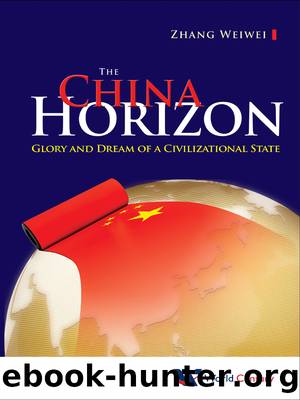The China Horizon by Weiwei Zhang

Author:Weiwei Zhang
Language: eng
Format: epub
ISBN: 9781938134753
Publisher: World Scientific Publishing Company
Published: 2016-11-15T00:00:00+00:00
Fourthly, the mixed economy as an institution. Chinaâs present socialist market economy is essentially a mixed economy, i.e. a mixture of âthe invisible handâ and âthe visible handâ, of the market force and state power, of the modern market economy and traditional humanistic economy, and of the state sector and the non-state sector. It aims to achieve the optimal allocation of resources through the market economy while ensuring macro stability and social justice through socialism. Despite some of its weaknesses, this institutional arrangement is on the whole a success and has produced the miracle of Chinaâs dramatic rise. True, it has its share of problems, some of which are serious, yet overall, such an institutional arrangement has performed better than the Washington consensus. It is the Western countries, not China, that are experiencing the financial crisis, debt crisis and economic crisis. And it is in most Western countries, not China, where peopleâs real income has stagnated or even fallen over the past two decades.
The âmixed economyâ has continued and further developed Chinaâs traditional notion of the renben jingji (peopleâs livelihood-oriented economy or humanistic economy), a key feature of Chinaâs traditional economic system, i.e. economic development should essentially aim at promoting peopleâs livelihood. The stateâs role in this kind of economy was prominent, which could be traced back to On Salt and Iron (Yan Tie Lun), the famous book of the early Han dynasty (202 BC to AD 220), and to the legendary story of harnessing the Yellow River by Emperor Yu of the Xia Dynasty (or about the 21st century BC).
Throughout the long history of China, it was proven that if the state failed to develop economy and improve peopleâs livelihood and was unable to handle properly and competently natural disasters or other catastrophes, it would lose the âmandate of heavenâ. Nevertheless, if China had continued the minben jingji without embracing the modern market economy, it would not be able to compete with other economies in this fiercely competitive world. It is for this reason that over the past three decades, China has on the one hand embraced the modern market economy, and on the other hand, continued with its age-old tradition of the minben jingji by focusing on improving peopleâs livelihood in all possible dimensions.
As a civilizational state with a super-large population and super-vast territory, the central and local governments are the two engines driving the growth of the economy. And such a dynamic interaction between the central and the local governments can be traced back to the prefecture and county system of the Qin dynasty (221â206 BC) and the Han dynasty (201 BC to AD 220), well over two millennium ago, to the reform initiated by Wang Anshi (AD 1021â1086) in the northern Song dynasty (AD 960â1279) and to Chairman Maoâs policy of âwalking on two legsâ. Undoubtedly, the role of the state in economic development is essential part of Chinaâs core competitiveness, although more efforts should be made now to better define the role of the state
Download
This site does not store any files on its server. We only index and link to content provided by other sites. Please contact the content providers to delete copyright contents if any and email us, we'll remove relevant links or contents immediately.
The Story of China by Michael Wood(936)
Mr. Selden's Map of China by Timothy Brook(791)
Philippines--Culture Smart! by Culture Smart!(690)
Heroic Hindu Resistance To Muslim Invaders (636 AD to 1206 AD) by Sita Ram Goel(669)
Akbar: The Great Mughal by Ira Mukhoty(658)
Vedic Physics: Scientific Origin of Hinduism by Raja Ram Mohan Roy(641)
The Meaning of India by Raja Rao(640)
Food of India by unknow(638)
Banaras by Diana L. Eck(629)
First Platoon by Annie Jacobsen(626)
India--Culture Smart! by Becky Stephen(614)
China Unbound by Joanna Chiu(613)
North of South by Shiva Naipaul(604)
Mao's Great Famine: The History of China's Most Devastating Catastrophe, 1958-1962 by Frank Dikötter(601)
Insurgency and Counterinsurgency by Jeremy Black(577)
The Genius of China: 3,000 Years of Science, Discovery, and Invention by Robert Temple(577)
How to Be a Modern Samurai by Antony Cummins(574)
A History of Japan by R.H.P. Mason & J.G. Caiger(570)
The Digital Silk Road by Jonathan E. Hillman(566)
